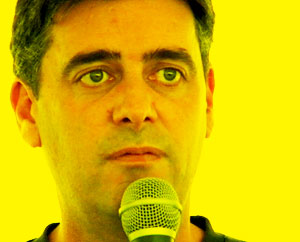Dr Wilson Lennard on Commercial Aquaponics Design
Recently Ecofilms Jane Gapinski caught up with biologist and aquaponics consultant Dr Wilson Lennard who was running a little experimental commercial aquaponics system located at CERES a community farm and education center located in Melbourne, Australia.
This community aquaponics system was not designed by Lennard but he was invited to take it over in an attempt to make it work profitably.
The produce that is harvested is sold to the local cafe located at the site.
Dr Lennard in the video points out a few design flaws and shares some tips on improving a system for commercial application.
http://youtu.be/WUgojSGMEfU
Note: Dr Wilson Lennard has asked that this video be removed
Jane whipped out her little camera and filmed this interesting little rave from Dr Lennard about what you should consider important when designing your own commercial system.
He feels that the width of the floating raft troughs at CERES are too wide and ergonomically difficult to manage when it comes to shifting the floating raft trays around. Sometimes building a simple system creates problems later on in workflow management.
…I don’t work on volume. I know everyone in backyards works on how much volume, how much fishtank to how much volume of grow-bed.” he says, “That’s a load of crap.”
Lennard says he designs his systems quite differently from most people who come from a backyard system. He stresses the need for added filtration, mechanical filters, sumps and smart plumbing will make your life a lot easier to manage if you can design your system grow-beds to be modular and inter-dependent. Each trough or growbed should be able to be switched on and off at will. Water flow rates should also be able to be increased or lowered at will to any trough.
Each system should be easy to walk around with easy access to all inspection points. Being able to keep your aquaponics system running only as an aquaculture system will allow for easy maintenance. Managing to control water flow to various independent growbeds is the key to managing a successful system he says.
He cites the case where the previous occupants harvested all the vegetables in one hit. There was a sudden ammonia spike and the fish started dieing. Not a good way to run any fledgling commercial system. Wilson tends to move his plants around quiet regularly to balance the load of the system.
He can be quite straight forward in determining fish ratios to growbeds.
“I don’t work on volume. I know everyone in backyards works on how much volume, how much fishtank to how much volume of grow-bed.” he says, “That’s a load of crap.”
“Plants use a predictable amount of nutrients everyday and fish produce a predictable about of waste.” he says. “So its about how much fish feed you throw in for the surface area you have and the number of plants that you grow.”
The only thing you need to know is how many fish do you need to eat that fish food that you are throwing in.” he says.
Being able to keep the plants happily fed with sufficient nutrients will tell you how many fish you require.
There are two 20,000 litre systems side by side stocked with trout.
Incidentally, Dr Lennard recommends you grow plants that reap the most return on your dollar. His preference is herbs like Basil, dill and Coriander (Cilantro) and other small easy to grow varieties.







Why was the video taken down? It was great info and I wanted to watch it again.